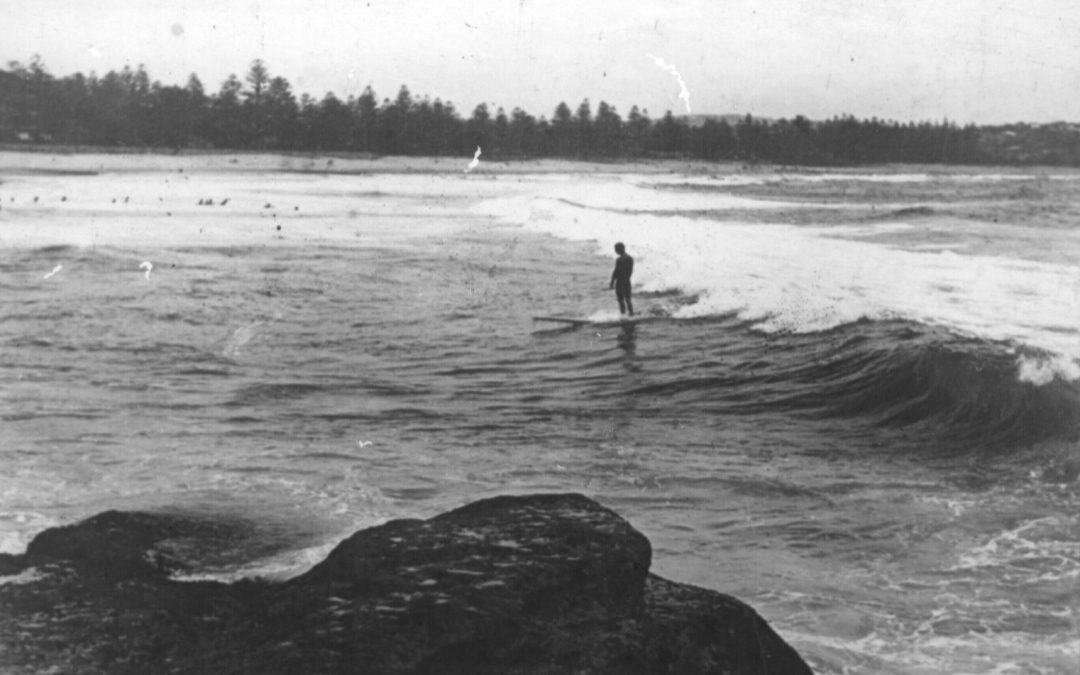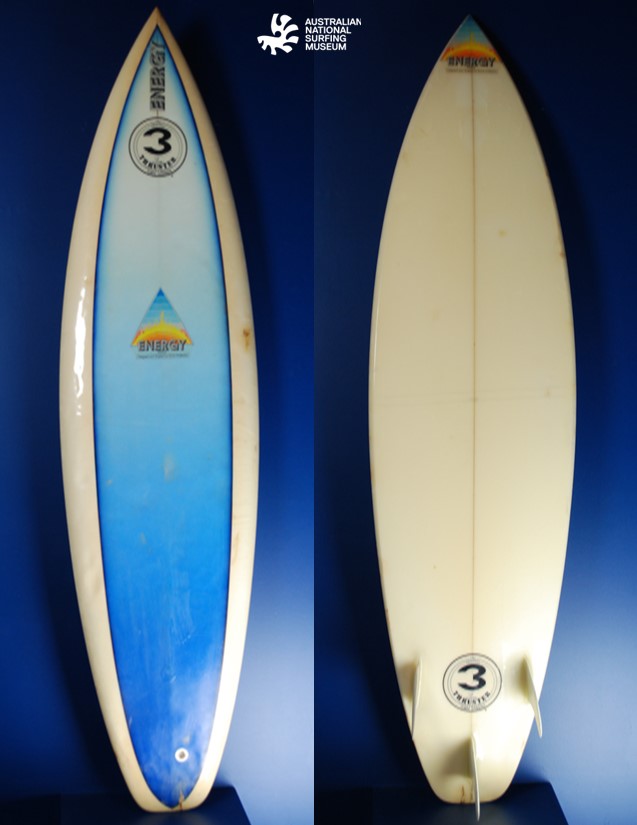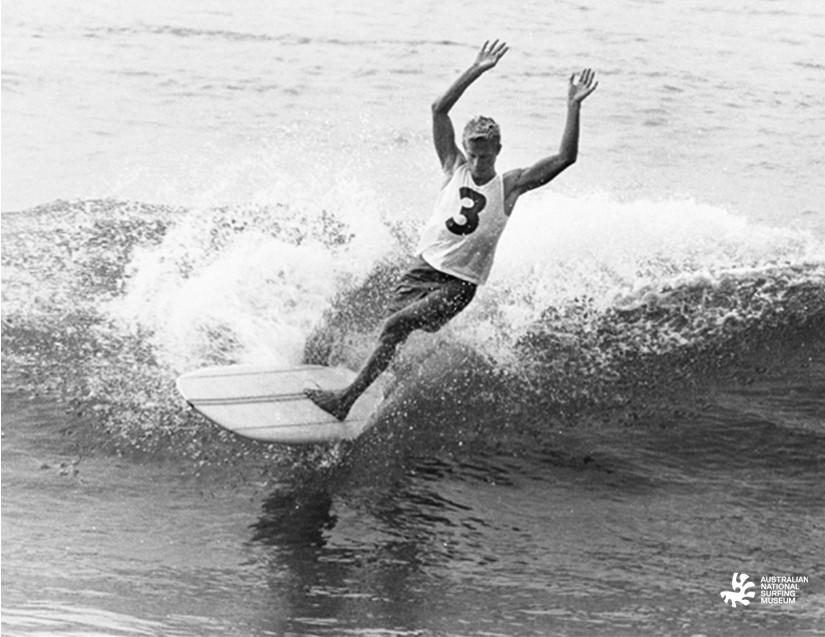It is a curious thing, given that Australians identify so closely with the beach and surfing, that the origins of the Australian surfing story disappear back into the mists of time. No one is absolutely sure when and where surfing began here. It is beyond doubt that coastal communities in many places around the country developed an affinity and dependence on the ocean and have played around the edges of this great island continent for a very long time.
In his book Salt Water People, John Ogdon details indigenous coastal communities who enjoyed fishing, swimming and (body) surfing on ocean beaches. The Cammeragal clan lived north of the harbour, and the Gadigal to the south of Sydney before the arrival of European settlers in the late 1700s. The traditional lives of these indigenous communities were impacted dramatically by European settlement, through disease and cultural assimilation, and bore little resemblance to their pre-settlement lifestyles within a few short years. As a result, there is little evidence remaining of how these communities enjoyed the ocean and these beaches.
Most of the people who had sailed from the other side of the world to be here couldn’t swim, and were understandably wary of the ocean, but long hot summers drew people to the beach. During the Victorian era, beach bathing bans were put in place to discourage swimming and beach access during daylight hours, in truth these bans were mostly about separating swimmers and shipping/maritime activities around Sydney harbour. For keen swimmers it was just a matter of finding spots not covered by the bans. In time some swimming facilities were established to maintain people’s modesty if they did head to the beach for a dip. Beach goers were segregated in some areas with specific times and/or places for men and women to swim separately. Of course in stereotypical Aussie larrikin style, some chose to ignore the rules and explore more remote beaches. The popularity of beach bathing grew, and around the turn of the century most swimming bans were largely being ignored by a growing number of Aussie beach lovers.
As more and more Aussies headed to the beach, there was a dramatic increase in drownings. Coastal councils responded with a number of measures to assist with life saving and soon surf life saving clubs started to appear at popular beaches like Manly and Bondi. It was from this group of rugged individualists, who were keen to spend as much time as they could at the beach, that Australia’s first surfers appeared. There was a small but dedicated group who started surfing on imported Hawaiian surfboards and locally built copies, however during this time surfing remained mostly a curiosity, something largely unknown.
For a long time any history of Australian surfing gave the impression that Australians had to be shown how to surf, that we were waiting for someone to lead the way. In truth, Australians had been pursuing surfing for some time, in small numbers, and had developed some skills. Manly’s Tommy Walker was famous for doing headstands while surfing, and the oldest known image of anyone surfing in Australia is of him doing just that on his board at Yamba (NSW) in the summer of 1911-12. There is also the curious rumour of Australian servicemen arriving in Cape Town South Africa on their way to World War 1, shaping a surfboard and riding it at a spot know known as Surfers Beach in Muizenberg in 1914.
Most surf histories credit Hawaiian swimming/surfing icon Duke Kahanamoku with providing the initial spark for surfing in this country, but that ignores the history of Australia’s early surfing pioneers. In truth Duke fanned the flames that already existed, providing exposure surfing had never had before in this country. His inspiration and influence on Australia’s first generation of surfers was profound, but he was not the first person to surf here. Duke would go on to be one of surfing’s most enduring and inspirational characters, regarded widely as surfing’s greatest ambassador’s, people rightly point to his Australian visit as a turning point in Australian surfing.
The Australian gaze had shifted toward the coast. Surfing and beach culture would become an integral part of our national identity, as we were drawn to the ocean. Pioneer surfers like Tommy Walker had paddled out into the ocean, searching out that thrill that only a breaking wave can provide, and onto surfing’s long ride, a ride that continues to this day.
Pic Snowy McAlister surfing solitude Manly 1922 pic courtesy C.J. McAlister/ANSM collection
See more articles
PEOPLE & PLACE
In looking to refurb and update the museum one of the themes we will be exploring is People and Place. There is certainly a LOT locally to celebrate, a pretty epic place, steeped in surfing history, with a raft of interesting characters . . . I love this photo taken...
TURNING POINTS – THE BOARD THAT CHANGED THE SURFING WORLD
Simon Anderson’s Thruster is The Most Significant Design Innovation of the past 100 years, ushering in a new era of wave shredding performance and eventually becoming the most copied board design in history. Over the past 50 years, the majority of surfboard design...
SECRET SURFING HISTORY – FINAL WAVE
An old saying goes: “Believe none of what you hear, and only half of what you see.” It’s not bad advice these days considering some of what goes on with the internet. This though is a story of one of the most iconic images from Australian surfing history, and how...




